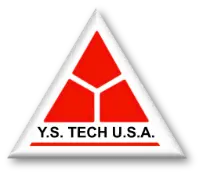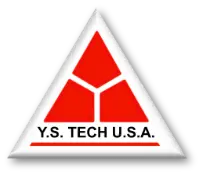11 steps to enhance heat dissipation in telecom components: a comprehensive guide for thermal engineers
Is your telecom equipment running hot under the collar? You know the risks: overheating means random shutdowns, signal loss, or even equipment failure. But what if you could turn those heat headaches into a cool, calculated advantage? By mastering heat dissipation, you not only boost reliability but also extend the life of every device you touch.
Thermal engineers like you face relentless pressure to juggle higher power densities and ever-shrinking form factors. Without a step-by-step plan, it’s easy to miss a critical detail that could cost your company time, money, or its reputation. That’s why this guide delivers a clear, actionable roadmap, broken down into 11 essential steps, to help you squeeze out every last degree of cooling performance.
Let’s start with a quick rundown of what’s ahead:
- Laying the groundwork with heat dissipation basics
- Smarter component placement for better cooling
- Heatsinks, fans, and advanced cooling tech
- PCB design tweaks that make a measurable impact
- Maintenance strategies that keep your system cool for the long run
With real-world examples and tested techniques, you’ll be ready to tackle even the hottest telecom challenges.
Why a step-by-step approach works
Heat dissipation isn’t a job for guesswork. Each component, trace, and airflow path matters. A step-by-step plan means you’ll catch every potential source of heat buildup, check each box on compliance, and systematically reduce thermal risk. Skipping steps? That’s how hotspots sneak up on you.
Ready to keep your cool? Here’s the 11-step journey to optimized heat dissipation.
Step 1: Get comfortable with heat dissipation concepts
Before you reach for a fan or heatsink, you need a clear understanding of how heat moves and accumulates inside telecom equipment. Conduction, convection, and radiation all play a role, and knowing their limits helps you model thermal budgets more accurately.
For example, increasing surface area for dissipation can boost cooling efficiency by up to 50%. That single insight can change how you size sinks or design enclosures. You’ll find more fundamentals in Cadence’s guide.
Step 2: Place components strategically
Placement is your first thermal lever. High-power chips, VRMs, and regulators should be arranged to shorten conduction paths and align with airflow corridors. Sensitive components should be positioned away from heat sources to avoid thermal drift.
In one test, placing a CPU closer to a fan intake dropped its junction temperature by more than 10 °C. For practical layout strategies, see TGlobal Corp’s tips.
Step 3: Use heatsinks to multiply surface area
Heatsinks spread heat over a larger surface so convection can do its job. Copper gives maximum conductivity, while aluminum balances weight and cost. Just as important is the TIM—poor interface quality cancels out gains.
In a telecom rack design, upgrading from passive to actively cooled heatsinks cut component temps by 30%. Learn more at Flex Power Modules.
Step 4: Add low-noise fans for forced airflow
Natural convection is rarely enough for telecom racks with dense PCBs. Fans delivering 100–200 CFM can bring down local temps by 15–25 °C. Redundancy (N+1 fans) ensures reliability even under failure conditions.
In one network center, fan-cooled enclosures extended the operational life of equipment by years. See AllPCB’s breakdown.
Step 5: Try thermoelectric cooling for tricky spots
TECs use the Peltier effect to pump heat from one side to the other. They’re less efficient overall but invaluable in sealed or compact systems where airflow isn’t an option.
YSTech USA reports using TECs in edge computing units that couldn’t fit fans, keeping CPUs below 60 °C inside tight enclosures. Read more at YSTech USA.
Step 6: Consider Peltier devices for pinpoint heat transfers
When a single hotspot such as a sensor, oscillator, or laser diode must be kept stable, Peltier devices excel. They move heat away from delicate parts to chassis walls or external sinks without overcooling the entire system.
Even satellite communication modules depend on Peltiers to stabilize laser transmitters. See Same Sky Devices.
Step 7: Expand surface area wherever possible
Heat needs pathways to escape. Adding fins, ribbing, vent holes, or copper pours creates more surface and lowers thermal resistance. Even small chassis design changes can double cooling effectiveness.
Cadence reports that each additional cm² of effective surface can improve dissipation by ~10%. Reference their analysis here.
Step 8: Optimize your PCB for thermal performance
Your PCB is more than a circuit,it’s also a heat spreader. Add thermal vias to draw heat into ground planes, use heavier copper weights, and create copper pours under high-power components.
PCB Trace found that thermal vias lowered hotspot temperatures by up to 25% in test boards. More design tips at PCB Trace.
Step 9: Run a detailed thermal analysis
Simulation tools (CFD, FEA) let you visualize airflow vectors and ΔT across components before you build. They uncover recirculation zones or bottlenecks you’d never catch by eye.
In one telecom facility, a thermal audit pinpointed a persistent hotspot. Once corrected, it eliminated repeated system crashes. See DNP Global.
Step 10: Keep cooling systems clean and well-maintained
Even a flawless design fails if airflow paths are clogged. Dust and debris block fins, slow fans, and raise ΔT across boards. Preventive maintenance programs such as filter changes, cleaning, and sensor calibration extend system lifespans dramatically.
One operator dropped rack temps by nearly 20 °C simply by restoring airflow through regular cleaning.
Step 11: Stay up to date on industry standards
Telecom thermal requirements evolve constantly. IPC, JEDEC, and ETSI continue to refine reliability benchmarks, junction temperature ranges, and test methods. Staying aligned ensures your designs pass compliance and avoid warranty claims.
By building to current standards, you also ensure your systems integrate seamlessly with next-gen materials and cooling methods.
Key Takeaways
- Understand and apply conduction, convection, and radiation in every design.
- Optimize component layout and PCB thermal paths before adding hardware.
- Heatsinks and forced airflow deliver bulk cooling so don’t underestimate TIMs.
- TECs and Peltiers add precision when airflow isn’t feasible.
- Maintenance and standards compliance are as critical as initial design.
FAQ: Enhancing Heat Dissipation in Telecom Components
Q: What are the most effective methods for telecom hardware?
A: The most impactful include strategic component placement, well-sized heatsinks, forced-air cooling with low-noise fans, PCB-level heat spreading, and when necessary, thermoelectric or Peltier modules. Hybrid approaches like vapor chambers paired with airflow are increasingly used in high-density telecom boards.
Q: How should I design PCBs for thermal control?
A: Add thermal vias, wider copper pours, and thicker copper layers to spread heat away from hotspots. Pair these with high-conductivity TIMs to interface with chassis or heatsinks. Following IPC and JEDEC design guidelines helps ensure compliance and reliability.
Q: Why is regular maintenance important?
A: Dust, debris, and blocked fins restrict airflow, raising component ΔT and accelerating failure. Routine cleaning restores airflow and preserves the thermal margins built into the design.
Q: What role do standards play in thermal management?
A: Industry standards (IPC, JEDEC, ETSI) define thermal testing methods and reliability targets. Compliance ensures your designs meet safety requirements, perform as specified, and avoid warranty or field failure issues.
Q: When should I use advanced cooling like TECs or Peltiers?
A: Use them when space is tight, enclosures are sealed, or when a specific hotspot (like a laser or oscillator) needs targeted cooling beyond what airflow or heatsinks can deliver.
A: Run CFD or FEA thermal simulations before prototyping. They highlight bottlenecks and give you a chance to redesign layouts or add dissipation strategies before costly builds.



